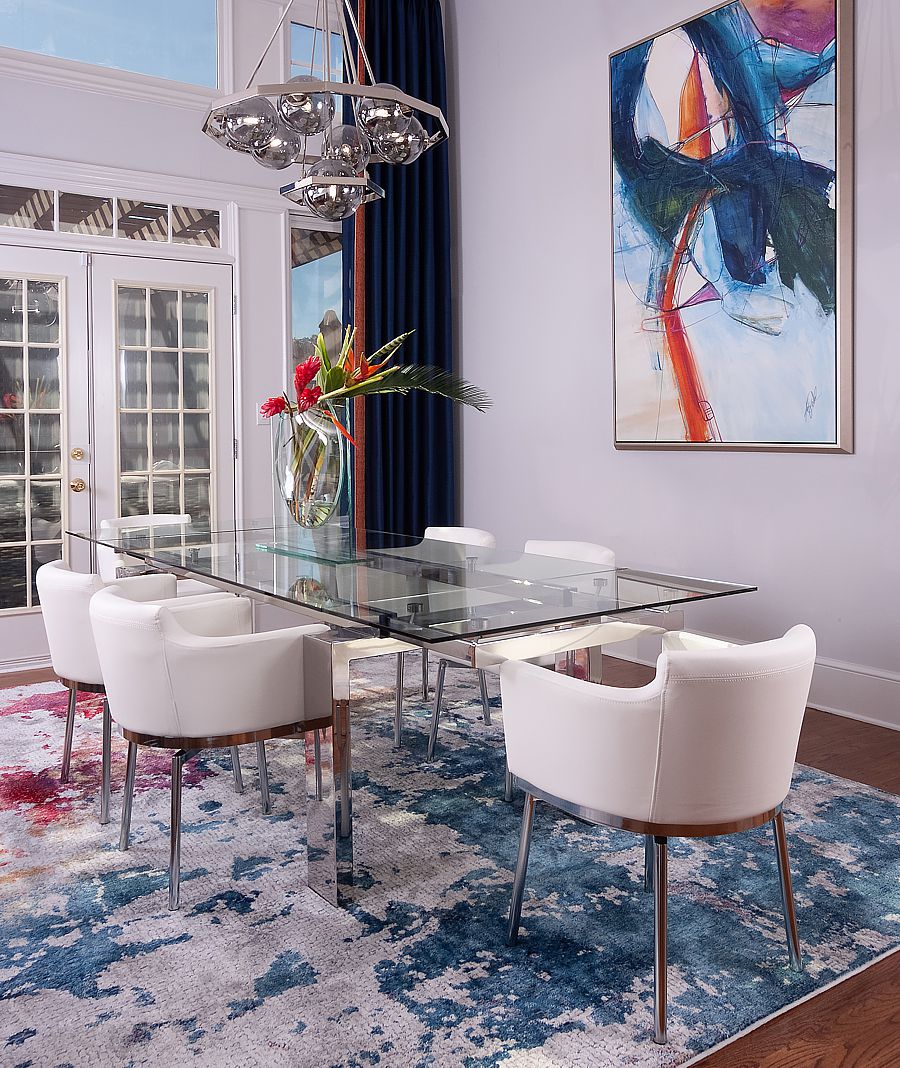Reading time 4 minutes
Tastes in dining room style are as varied as tastes for food itself. Depending on personal preferences, individuals may choose to incorporate elements from multiple styles to create a dining room that reflects their unique personality and lifestyle.
Historic Dining
The ancients in Mesopotamia, Egypt, Greece, and Rome had communal dining, but it was limited to the wealthy. During the Middle Ages, communal dining halls were still prevalent, especially in castles and monasteries. The great hall was the beginning of multi-functional space for dining, socializing, and other activities.

Formal Dining
Over the centuries, dining spaces became more refined with elaborate furniture, tapestries, and artwork. The Victorian era saw the height of formality with dining rooms often extravagantly decorated and furnished, elaborate table settings, and strict etiquette governing dining practices. In the U.S., it was, perhaps, Thomas Jefferson who set the standard for the grand dining room. Because the dining room was also used as a reception room, the dining tables were designed for folding away.

Thomas Jefferson’s dining room at Monticello
With the rise of the Industrial Revolution, separate dining rooms became more common in middle-class homes, reflecting a growing emphasis on privacy and family life. The early 20th century saw a move towards more casual dining habits, influenced by changing social norms and the advent of smaller, more intimate family units. Dining rooms in middle-class homes became less formal, often doubling as multipurpose spaces for various activities. In recent decades, the dining room has continued to evolve in response to changing lifestyles and architectural trends.
Selecting the Table Shape
While the area and shape of the available space will dictate many decisions, the selection of the shape and style of the table may be the fundamental building block for creating the design for the space. That decision can help you settle on the overall functionality you want for the space.

The rectangular table has been the standard form since the ancients. Through time, they became larger and more ornate with decorative features. The 20th century saw a variety of dining table shapes and styles emerge, reflecting changing tastes and lifestyles. Rectangular tables remained popular for formal dining rooms, while smaller round or square tables became common in kitchens and breakfast nooks. Round or oval tables promote more interaction because each guest can see everyone’s face.

Additionally, modular, and extendable tables have become popular for their versatility and space-saving features, especially in smaller homes and apartments. To make a smaller space look larger, consider a glass top table. Glass creates the illusion of space and gives a room a light, airy feel.

Storage
The selection of furnishings for storage also will be dictated by the space being used. Fortunately, today’s variety is greater than ever. Flexibility is key with dining room storage units designed to accommodate various items, from dinnerware and glassware to table linens, serving utensils, and even extra pantry items.

Storage pieces also give you surfaces on which you can display art or other accessories to add personality to your space.
Today’s dining spaces tend to be vastly different from the dark traditional look with intricate moldings, elegant heavy draperies, and large wooden tables. Color is now more common in dining areas. Even a traditional look can have more visual interest with patterns and texture. See these beautiful wallcoverings from Thibault available through your interior designer.

The style choices are numerous. You can have the clean lines, minimalist aesthetics, and functionality of modern/contemporary. Or, yes, farmhouse rustic. Maybe you’d prefer Scandinavian simplicity or an industrial look. There are even more choices with Bohemian, coastal, mid-century modern, eclectic, and, of course, traditional.
With so much to consider, you can avoid mistakes by having professional assistance. Contact us or call (703) 936-1772 to schedule an appointment for your dining room makeover.
Join Our Newsletter
If you enjoyed reading this interior design blog, sign up for our monthly newsletter. They’re never too long and will brighten your day!










